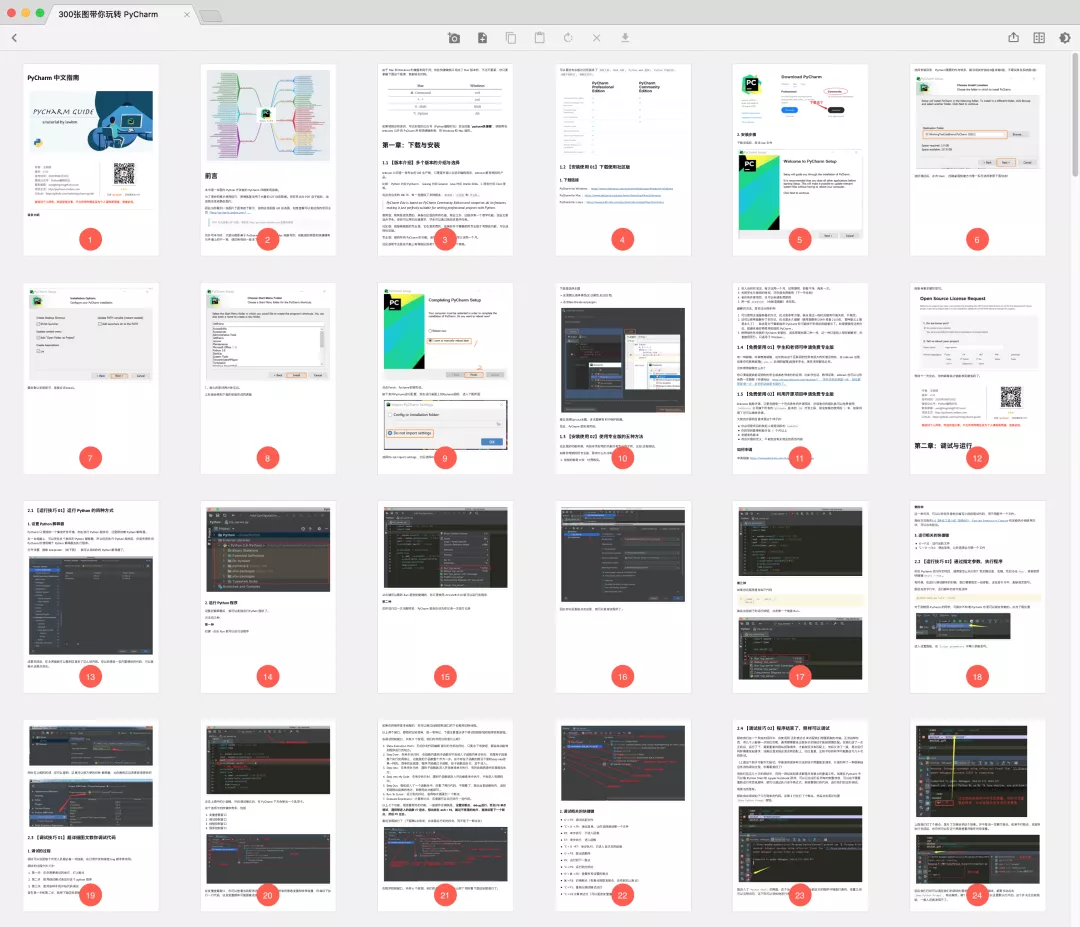Python由于语言的简洁性,让我们以人类思考的方式来写代码,新手更容易上手,老鸟更爱不释手。
要写出 Pythonic(优雅的、地道的、整洁的)代码,还要平时多观察那些大牛代码,Github 上有很多非常优秀的源代码值得阅读,比如:requests、flask、tornado,这里小明收集了一些常见的 Pythonic 写法,帮助你养成写优秀代码的习惯。
01. 变量交换
Bad
tmp = a
a = b
b = tmpPythonic
a,b = b,a02. 列表推导
Bad
my_list = []
for i in range(10):my_list.append(i*2)Pythonic
my_list = [i*2 for i in range(10)]03. 单行表达式
虽然列表推导式由于其简洁性及表达性,被广受推崇。
但是有许多可以写成单行的表达式,并不是好的做法。
Bad
print 'one'; print 'two'if x == 1: print 'one'if <complex comparison> and <other complex comparison>:# do somethingPythonic
print 'one'
print 'two'if x == 1:print 'one'cond1 = <complex comparison>
cond2 = <other complex comparison>
if cond1 and cond2:# do something04. 带索引遍历
Bad
for i in range(len(my_list)):print(i, "-->", my_list[i])Pythonic
for i,item in enumerate(my_list):print(i, "-->",item)05. 序列解包
Pythonic
a, *rest = [1, 2, 3]
# a = 1, rest = [2, 3]a, *middle, c = [1, 2, 3, 4]
# a = 1, middle = [2, 3], c = 406. 字符串拼接
Bad
letters = ['s', 'p', 'a', 'm']
s=""
for let in letters:s += letPythonic
letters = ['s', 'p', 'a', 'm']
word = ''.join(letters)07. 真假判断
Bad
if attr == True:print 'True!'if attr == None:print 'attr is None!'Pythonic
if attr:print 'attr is truthy!'if not attr:print 'attr is falsey!'if attr is None:print 'attr is None!'08. 访问字典元素
Bad
d = {'hello': 'world'}
if d.has_key('hello'):print d['hello'] # prints 'world'
else:print 'default_value'Pythonic
d = {'hello': 'world'}print d.get('hello', 'default_value') # prints 'world'
print d.get('thingy', 'default_value') # prints 'default_value'# Or:
if 'hello' in d:print d['hello']09. 操作列表
Bad
a = [3, 4, 5]
b = []
for i in a:if i > 4:b.append(i)Pythonic
a = [3, 4, 5]
b = [i for i in a if i > 4]
# Or:
b = filter(lambda x: x > 4, a)Bad
a = [3, 4, 5]
for i in range(len(a)):a[i] += 3Pythonic
a = [3, 4, 5]
a = [i + 3 for i in a]
# Or:
a = map(lambda i: i + 3, a)10. 文件读取
Bad
f = open('file.txt')
a = f.read()
print a
f.close()Pythonic
with open('file.txt') as f:for line in f:print line11. 代码续行
Bad
my_very_big_string = """For a long time I used to go to bed early. Sometimes, \when I had put out my candle, my eyes would close so quickly that I had not even \time to say “I’m going to sleep.”"""from some.deep.module.inside.a.module import a_nice_function, another_nice_function, \yet_another_nice_functionPythonic
my_very_big_string = ("For a long time I used to go to bed early. Sometimes, ""when I had put out my candle, my eyes would close so quickly ""that I had not even time to say “I’m going to sleep.”"
)from some.deep.module.inside.a.module import (a_nice_function, another_nice_function, yet_another_nice_function)12. 显式代码
Bad
def make_complex(*args):x, y = argsreturn dict(**locals())Pythonic
def make_complex(x, y):return {'x': x, 'y': y}13. 使用占位符
Pythonic
filename = 'foobar.txt'
basename, _, ext = filename.rpartition('.')14. 链式比较
Bad
if age > 18 and age < 60:print("young man")Pythonic
if 18 < age < 60:print("young man")理解了链式比较操作,那么你应该知道为什么下面这行代码输出的结果是 False
>>> False == False == True
False15. 三目运算
这个保留意见。随使用习惯就好。
Bad
if a > 2:b = 2
else:b = 1
#b = 2
Pythonic
a = 3 b = 2 if a > 2 else 1
#b = 2参考文档
- http://docs.python-guide.org/en/latest/writing/style/
- https://foofish.net/idiomatic_part2.html
文末福利
本人原创的 《PyCharm 中文指南》一书前段时间一经发布,就火爆了整个 Python 圈,发布仅一天的时间,下载量就突破了 1000 ,并且在当天就在 Github 上就收获了数百的 star,截至目前,下载量已经破万。
这本书一共将近 200 页,内含大量的图解,制作之精良,值得每个 Python 工程师 人手一份。

为方便你下载,我将这本书上传到 百度网盘上了,你可以自行获取。
链接:https://pan.baidu.com/s/1-NzATHFtaTV1MQzek70iUQ
密码:mft3